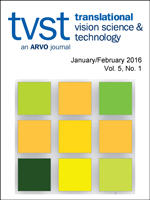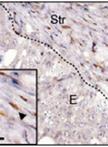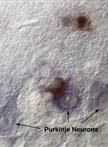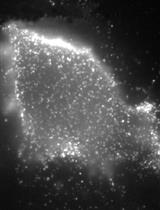- EN - English
- CN - 中文
Non-separate Mouse Sclerochoroid/RPE/Retina Staining and Whole Mount for the Integral Observation of Subretinal Layer
小鼠巩膜脉络膜/视网膜色素上皮/视网膜不分离染色及用于视网膜下层整体观察的全组织染色法
发布: 2021年01月05日第11卷第1期 DOI: 10.21769/BioProtoc.3872 浏览次数: 4359
评审: Dhruv Rajanikant PatelAnonymous reviewer(s)
Abstract
The subretinal layer between retinal pigment epithelium (RPE) and photoreceptors is a region involved in inflammation and angiogenesis during the procession of diseases such as age-related macular degeneration. The current protocols of whole mounts (retina and RPE) are unable to address the intact view of the subretinal layer because the separation between retina and RPE is required, and each separate tissue is then stained. Non-separate Sclerochoroid/RPE/Retina whole mount staining was recently developed and reported. The method can be further combined and optimized with melanin bleaching and tissue clearing. Here, we describe steps of both non-pigmented and pigmented mouse Sclerochoroid/RPE/Retina whole mount including eyeball preparation, staining, mounting and confocal scanning. In addition, we present the confocal images of RPE, subretinal microglia and the neighboring photoreceptors in Sclerochoroid/RPE/Retina whole mounts.
Keywords: Whole mount (全组织染色)Background
The retina in eyes is surrounded by retina pigmented epithelium (RPE), choroid and sclera. Generally, in whole mount staining, the retina tissue is separate from the choroid/RPE, and each part of the separate retina and choroid/RPE is stained. Thus, the separate whole mount staining of either retina or choroid/RPE does not address integral subretinal information. Recently, a Sclerochoroid/RPE/Retina whole mount protocol was developed (Kim et al., 2016; Ye et al., 2020). The method allows us to observe the integral and intact subretina as well as the neighboring RPE and photoreceptors. The method is also applicable to examine choroidal neovascularization from the choroid to the photoreceptor layer, but there is still a limitation in laser penetration depth of confocal microscopes, restraining the application of this protocol in animals with large eyes, which could be countered by use of light-sheet fluorescence microscope (Renier et al., 2014). Here, we illustrate the details of whole steps for immunofluorescent staining and mounting procedure of Sclerochoroid/RPE/Retina using mouse eyeballs.
Materials and Reagents
Kimtech wipers (Yuhan, catalog number: 47201 ; KimWipes, catalog number: 470224-038 )
Micro spoon spatula (Scilab, catalog number: SL.Spa7011, L150, Bowl-3x5, Blade-5x50, Stem-Ø2.5mm )
Transfer pipettes
60 mm dish (SPL Life Sciences, catalog number: 10060 ; Tomas Scientific, catalog number: 1213F04 )
48-well plates (Tomas Scientific, catalog number: 1219Z64 )
Industrial Single Edge Razor Blades (Dorco, catalog number: 4649676382 ; Polysciences, catalog number: 08410-1 )
Cover glasses (Marienfeld-Superior, catalog numbers: HSU-0101152-22x60, 40, 32 ; ThermoFisher, catalog numbers: 12-545-J, C, B )
Microscope slides (Marienfeld-Superior, catalog number: HSU-0810001 ; ThermoFisher, catalog number: 12-544-7 )
Mouse eye balls*
Dulbecco’s phosphate buffer saline (D-PBS), pH 7.4 (Welgene, catalog number: LB 001-02 ; Fisher Scientific, catalog number: 14190250 )
4% paraformaldehyde (PFA) in PBS, pH 7.4 (Biosesang, catalog number: PC2031 ; Thermo Scientific, catalog number: J19943K2 )
Hydrogen peroxide (H2O2) (30%, Sigma-Aldrich, catalog number: 216763 )
Triton X-100 (Sigma-Aldrich, catalog number: T8787 )
Sodium Azide (Sigma-Aldrich, catalog number: S2002 )
Bovine serum albumin (GenDEPOT, catalog number: A0100 ; Sigma-Aldrich, catalog number: A9647 )
Antibodies and staining agents to label RPE, microglia and cell nuclei:
RPE65 (Life Technologies, catalog number: MA1-116578 , dilution 1:500)
CD11b (Bio-Rad, formerly AbD Serotec, catalog number: MCA711 , dilution 1:1,000)
Phallodin-488 (Life Technologies, catalog number: A12379 , dilution 1:500)
Alexa Fluor 568-conjugated secondary antibody (Life Technologies, catalog number: A-11004 , dilution 1:1,000)
Hoechst 33342 (Life Technologies, catalog number: H3570, dilution 1:1,000)
Mounting buffer Fluoromount-G (Southern Biotech, catalog number: 0100-01 )
Notes:
The protocol was developed at National Eye Institute, National Institutes of Health (US) and has been adopted at ExosomePlus, Inc. (South Korea). We, thus, try to provide commercial catalog numbers used in US and South Korea.
*Any mouse eyeball can be used, but the pigmented eyeballs need melanin bleaching (Kim et al., 2016).
Equipment
Typing Forceps (McPherson, straight 5 mm, smooth 10.8 CM)
No. 5 forceps (Dumont, Swiss, catalog numbers: B-0208-5-PS, B-0108-5-PS ; Roboz, catalog number: RS4925 )
Micro spring scissors (Nopa Instruments, catalog number: AC778/02; Roboz, catalog number: RS5601)
Shaker (Lab. Companion, model: SK-300 )
[Option for bleaching] Heating block
Confocal microscope (Carl Zeiss Meditec, model: Zeiss-700 )
Dissection stereo microscope (Kern-Shhn, model: OZL-45R ; Carl Zeiss Meditec, Stemi 305/508)
Procedure
文章信息
版权信息
© 2021 The Authors; exclusive licensee Bio-protocol LLC.
如何引用
Lee, S. and Kim, S. (2021). Non-separate Mouse Sclerochoroid/RPE/Retina Staining and Whole Mount for the Integral Observation of Subretinal Layer. Bio-protocol 11(1): e3872. DOI: 10.21769/BioProtoc.3872.
分类
神经科学 > 神经系统疾病 > 神经退行性病变
生物化学 > 蛋白质 > 免疫检测 > 免疫染色法
您对这篇实验方法有问题吗?
在此处发布您的问题,我们将邀请本文作者来回答。同时,我们会将您的问题发布到Bio-protocol Exchange,以便寻求社区成员的帮助。
Share
Bluesky
X
Copy link













